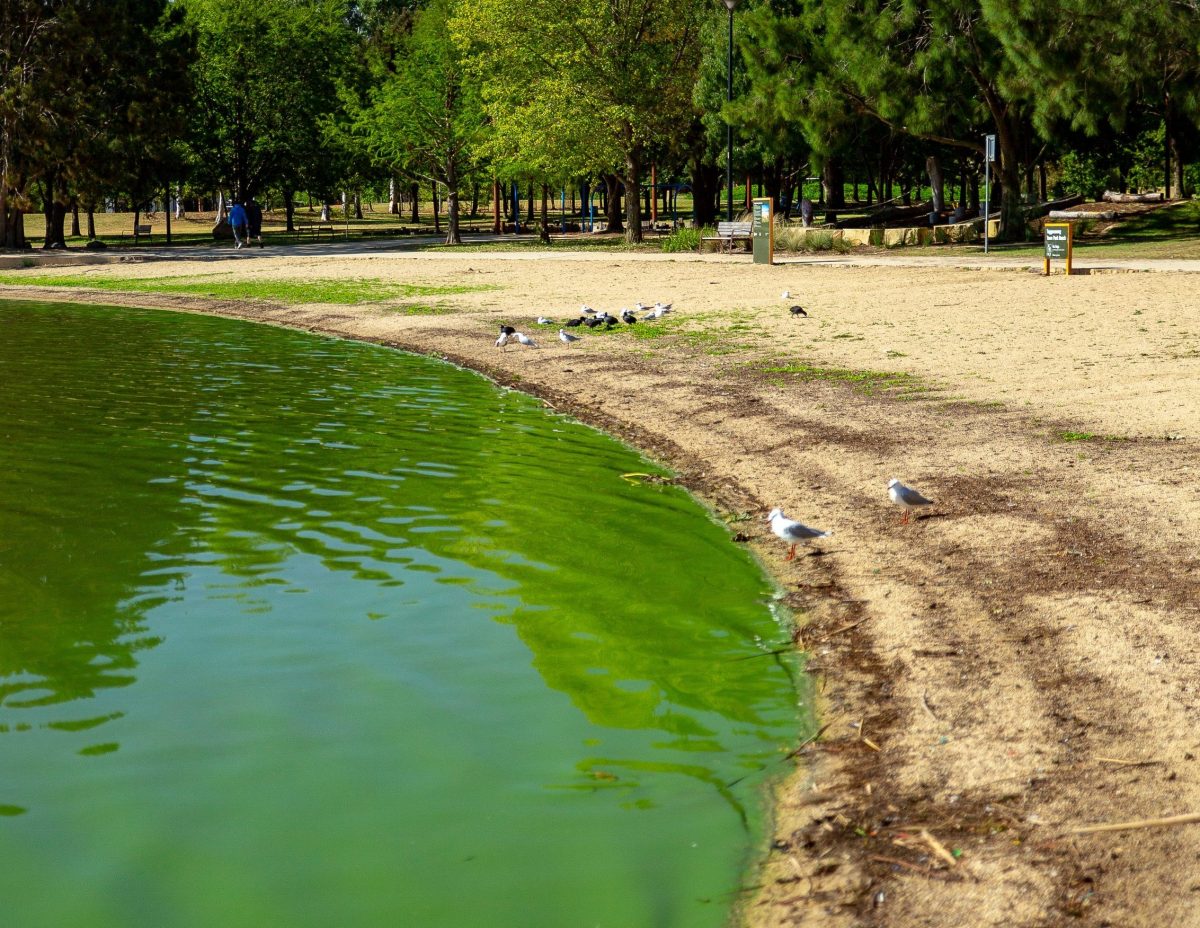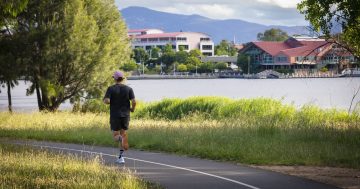
Algal blooms make Lake Tuggeranong unusable throughout the swimming season. Photo: File.
More will be done to try to protect the health of the notoriously unhealthy Lake Tuggeranong, with the ACT Government agreeing to explore improvements to its mowing program.
Specifically, it will investigate how grass clippings and leaf litter left behind after mowing could be collected to stop them from ultimately ending up in lakes and waterways across the Territory.
Scientists who study the lake believe that grass clippings and other organic matter lead to excessive nutrients entering the lake which then contribute to the notorious blue-green algae.
The latter leaves the lake unusable for the majority of the recreational swimming season.

ACT Greens crossbencher Johnathan Davis has called for substantial investment to fix Lake Tuggeranong. Photo: Lottie Twyford.
ACT Greens crossbencher Johnathan Davis led the push with a motion in the ACT Legislative Assembly this week (Thursday, 24 November).
Mr Davis suggested this could be done by using mowers with catchers, increasing the rate of street sweeping, trialling a dedicated street sweeping and a post-mowing collection program or installing collection nets inside stormwater drains.
He said many residents of Brindabella were concerned about the health of the lake.
“We need to acknowledge the impact our government mowing has on our waterways and then we need to try and mitigate it,” he said.
“I understand that the Government has finite resources and I’m not asking them to do the impossible.”
Mr Davis acknowledged there was lots of work underway from the Government.
For example, the Government in April poured an additional $1.5 million into a research project intended to look into the impact of leaves and organic matter flowing into the lake.
The Government supported Mr Davis’ motion.
Transport and City Services Minister Chris Steel acknowledged Tuggeranong residents wanted a lake which could be used for swimming, kayaking and enjoyed.
“I remember fondly my days there windsurfing on Lake Tuggeranong – something you did in the early 90s – not so much these days,” he said.
Mr Steel said more grass was being mown than ever before due to the third consecutive year of a La Nina weather cycle which was of course complicating the situation this year but it was just one element affecting the health of Lake Tuggeranong.
Water Minister Shane Rattenbury also welcomed the motion, saying more could still be done to improve the health of the lake.
Despite this investment, last year’s ACT Waterwatch Catchment Health Indicator Project (CHIP) annual report found that Lake Tuggeranong had its lowest water-health rating to date – it earned a D-minus.
This sounded alarm bells for some but University of Canberra researchers, who are studying the lake and its algal blooms, urged calm.
Dr Rod Ubrihien said the issues with water quality at Lake Tuggeranong were complex and longstanding and it was important not to jump to conclusions yet after such a wet year.
He further noted fixing water quality issues at the lake was a big task because it had initially been intended to be an urban catchment.
In a way, Dr Ubrihien told Region in July, the lake was doing its job by catching leaves and organic litter.
“The key purpose of the lake was to intercept those contaminants before they hit the Murrumbidgee, so the lake is doing its job – even though lots of residents don’t want to see it that way,” he said.













